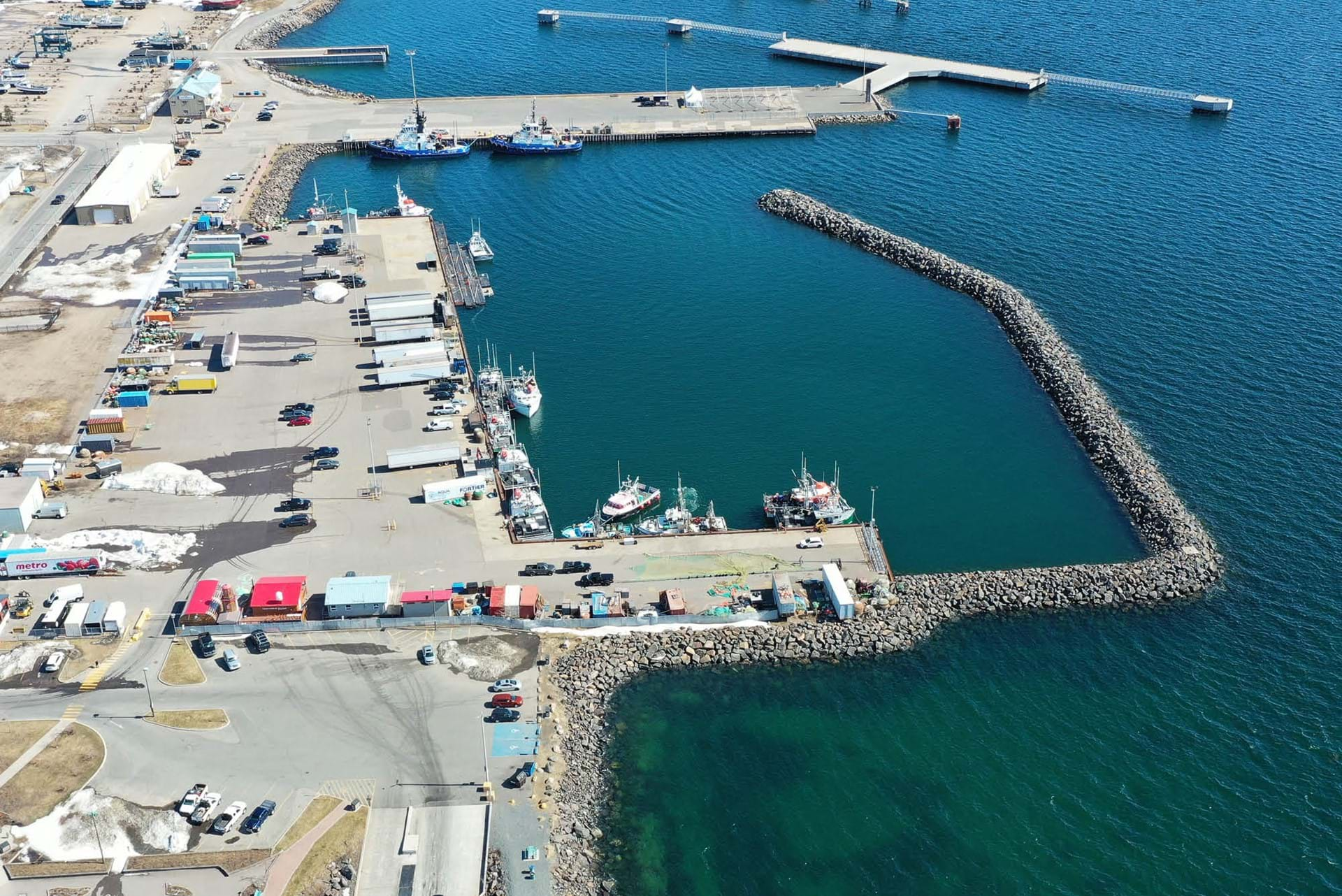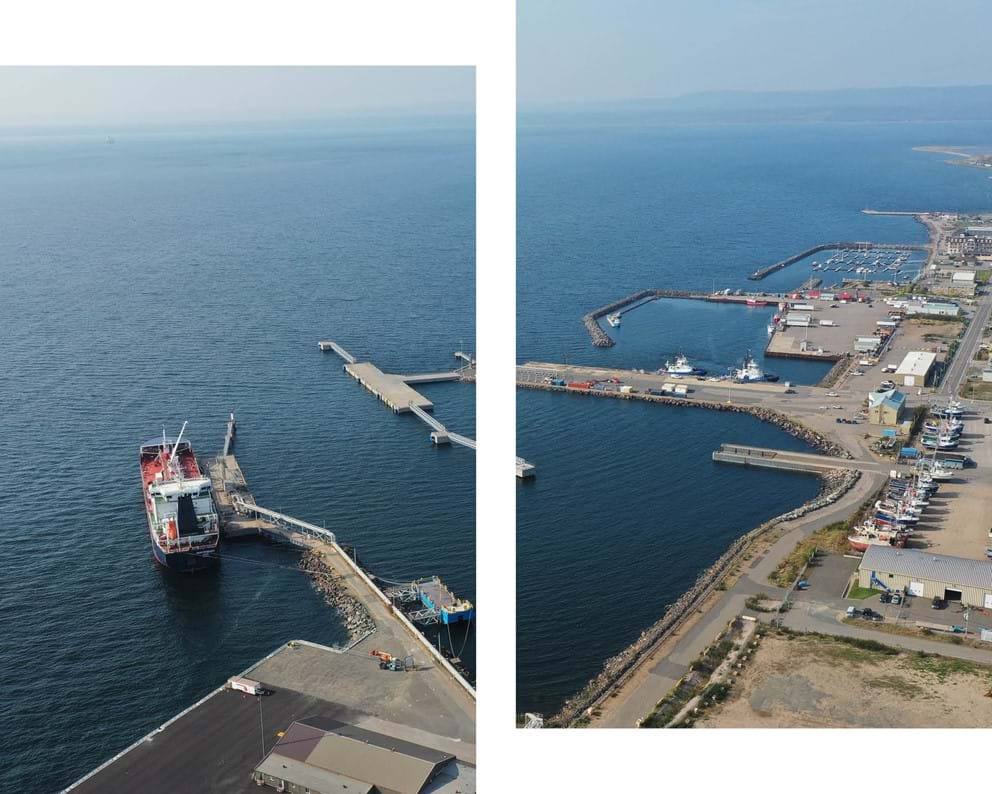
Innovative co-creation approach in Sept-Îles
LeadershipPort of Sept-Îles offers to try out co-creation process in reimagining its public waterfront
Green Marine’s new community relations indicator calls upon ports at the top Level 5 criteria to use the innovative approach of co-creation in undertaking and completing a project.
“Unlike traditional public consultations that seek approval for a plan that has already been conceptualized, the co-creation process starts off by identifying everyone with a potential interest in the project or its space and then inviting them to share their ideas from the outset,” explains Green Marine Program Manager Véronique Trudeau.
The concept is relatively new to the maritime industry. To gain a better understanding of it, Green Marine and several port representatives underwent a training session with a co-creation specialist from l’Atelier Social, which focuses on helping individuals and groups to communicate and collaborate when it comes to ecological, climate change and land-use issues.
“We also consulted with the Reseau Québec Maritime which has both funded and participated in co-creation projects related to the marine environment but none of them linked to date specifically to maritime transportation,” Trudeau adds. “All of this helped us to devise the guidelines for our criteria.”
Partnerships are our port’s strength - part of our DNA.
Subsequent discussions led to the RQM, an organization focused on encouraging responsible, sustainable maritime development, funding a project that would have co-creation experts help a port in the Province of Quebec to establish the steps for an actual co-creation initiative. Green Marine put out the call and the Port of Sept-Îles responded.
“Partnerships are our port’s strength - part of our DNA - so when we heard Green Marine was looking to do a pilot project, we immediately volunteered and started to think about what we could do using the co-creation process,” says Manon D’Auteuil, the port’s Director, Engineering and Sustainable Development, who attended the earlier co-creation training.
“We decided to work on the public access to the waterfront in the port’s city sector from the start of our property, where the City of Sept-Îles last built a pedestrian walkway, all the way to the area that includes our dock for visiting cruise ships,” D’Auteuil relates.

The area used for various public activities is an ideal choice, according to Jean-François Jasmin, Project Manager and Facilitator at Le Laboratoire en innovation ouverte (LLio), an applied research centre for open innovation that has established a set of co-creation procedures.
“Whenever there’s a project or a complex issue that involves multiple stakeholders, co-creation is often a good way to truly collaborate with various interests, tap into their different expertise, and hear fresh ideas about what could be done,” Jasmin explains.
The piers welcome cruise ships and other types of vessels, as well as being accessible to the public for fishing and recreational activities. “We had to establish a clear framework for the co-creation initiative because there are certain functions that piers have to fill, as well as some regulations for safety and security reasons,” D’Auteuil relates.
It’s also a good idea to formalize some kind of partnership agreement to engage the stakeholders in the collaborative process.
Jasmin notes that clarifying the project or problem from the very beginning establishes trust because people don’t feel misled later about what is and isn’t possible. “It’s also a good idea to formalize some kind of partnership agreement to engage the stakeholders in the collaborative process and ensure they fully understand their role and its implications,” he adds.
Working with LLio, Green Marine, RQM, as well as the Centre de développement et de recherche en intelligence numérique (CDRIN), which helps to use data more effectively and responsibly, the first step by the Port of Sept-îles has been to identify all the people, organizations, as well as agencies that might want or need a say in the project.
“It’s important to look beyond the obvious,” Jasmin emphasizes. “In this case, for instance, there are the people who commercially or recreationally fish in these waters at different hours of the day… and since we’re not the fishing experts, it’s important to ask them how this project might accommodate their uses in terms of pedestrian access or at least be done in such a way to facilitate a harmonious co-existence as much as possible.”
Co-creation involves a much greater societal interaction, but I am quite confident that will serve our port well in the long run.
With the long list of potential stakeholders identified, the Port of Sept-Îles was next guided through an empathy exercise to better understand each of these interest groups.
“I’m used to consulting on technical and environmental matters in the course of completing a project, but this goes well beyond that in encouraging us to really put ourselves in the place of others to reflect on their needs,” D’Auteuil says. “Co-creation involves a much greater societal interaction, but I am quite confident that will serve our port well in the long run.”
The process has now moved to a series of smaller and larger gatherings of the port authority and stakeholders throughout the summer into the fall that encourage them to collaborate on different possible scenarios for developing public waterfront access.
There’s no doubt that the co-creation process initially takes more time and effort, but it ultimately pays off.
“You’re inviting people to actually co-create from scratch within the established framework for the project, so that they come up with the very first potential scenarios,” Jasmin shares.
All of this takes into consideration and negotiation the various interests that include municipal administrators, the Innu community of Uashat Mak Mani-Utenam, other community groups, environmental organizations, tourism agencies, local daycares, and schools that visit the area with children during outings.
“There’s no doubt that the co-creation process initially takes more time and effort, but it ultimately pays off with the public and other stakeholders most often approving of the project along the way,” Jasmin says. “It also instills a sense of pride in that project and greater confidence in the port when it undertakes other initiatives.”
So far D’Auteuil is pleased and intrigued with the pilot project. “It’s nice to have the expertise available to us to learn and try something new with guidance every step of the way because this is quite an elaborate process,” she says.
“This is an opportunity for us to help Green Marine to establish the feasible step-by-step guidelines for an innovative co-creation process, and for the port to renovate one of its sectors in a way that I am hoping will ultimately make more people happy long term,” she adds.
D’Auteuil likes the fact that everyone involved in the process carries a certain responsibility to put forward solutions and collaborate with others. “You can’t just say, ‘I don’t like this’ or ‘I want that’ and then leave… You must be a part and truly involved in the project,” she notes. “So, yes, I am really curious to see what comes out of all of this and believe the results will be worth it.”
She also expects that once the step-by-step framework is established, it will be easier and faster to apply to other projects.
The Port of Sept-îles project will also serve as an example that we hope will inspire other participations to try the co-creation process.
Green Marine will use the pilot project as a case study to test and refine the program’s co-creation guidelines. “The Port of Sept-îles project will also serve as an example that we hope will inspire other participations to try the co-creation process,” Trudeau adds.
The co-creation process and the community relations indicators somewhat expand the scope of the Green Marine environmental certification program into the societal realm. “This is something that our participants have sought from Green Marine as they increasingly understand that social licence is as imperative as the economic drivers and environmental sustainability of sound business operations.”
